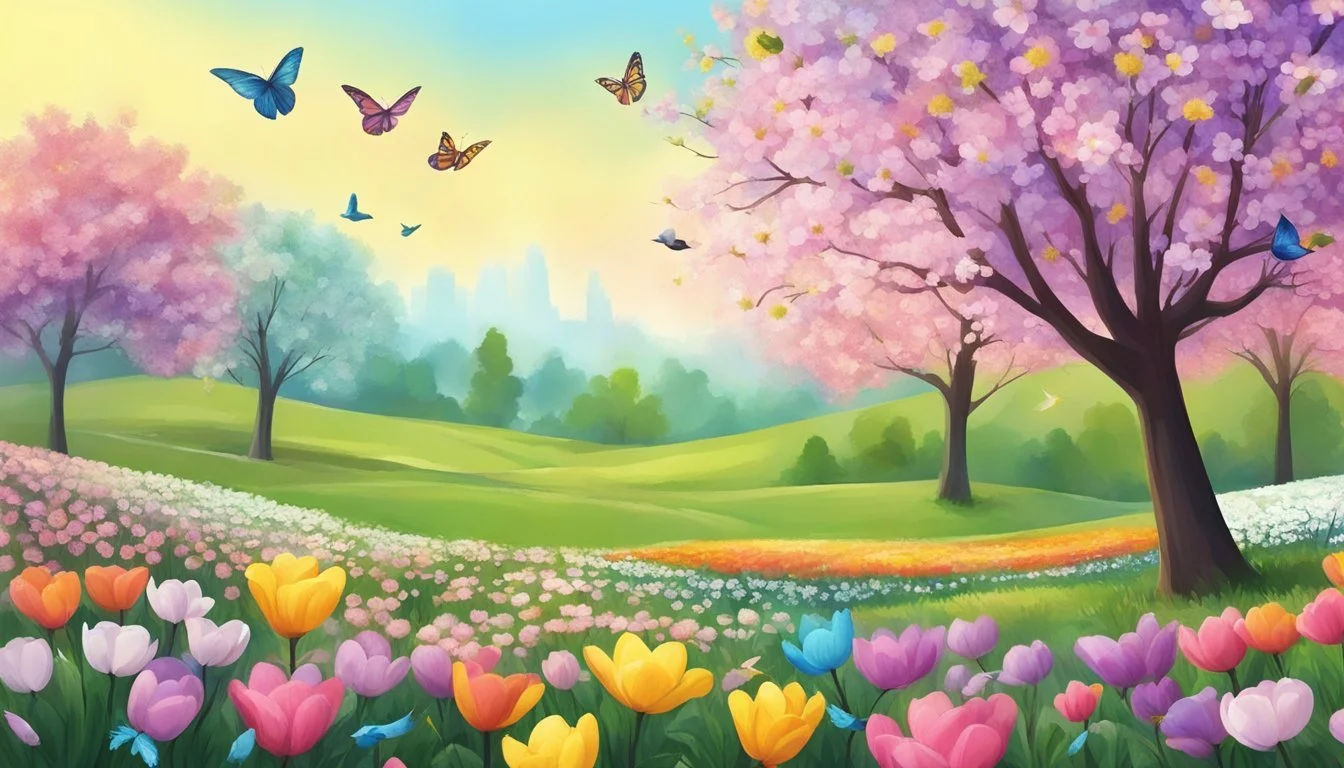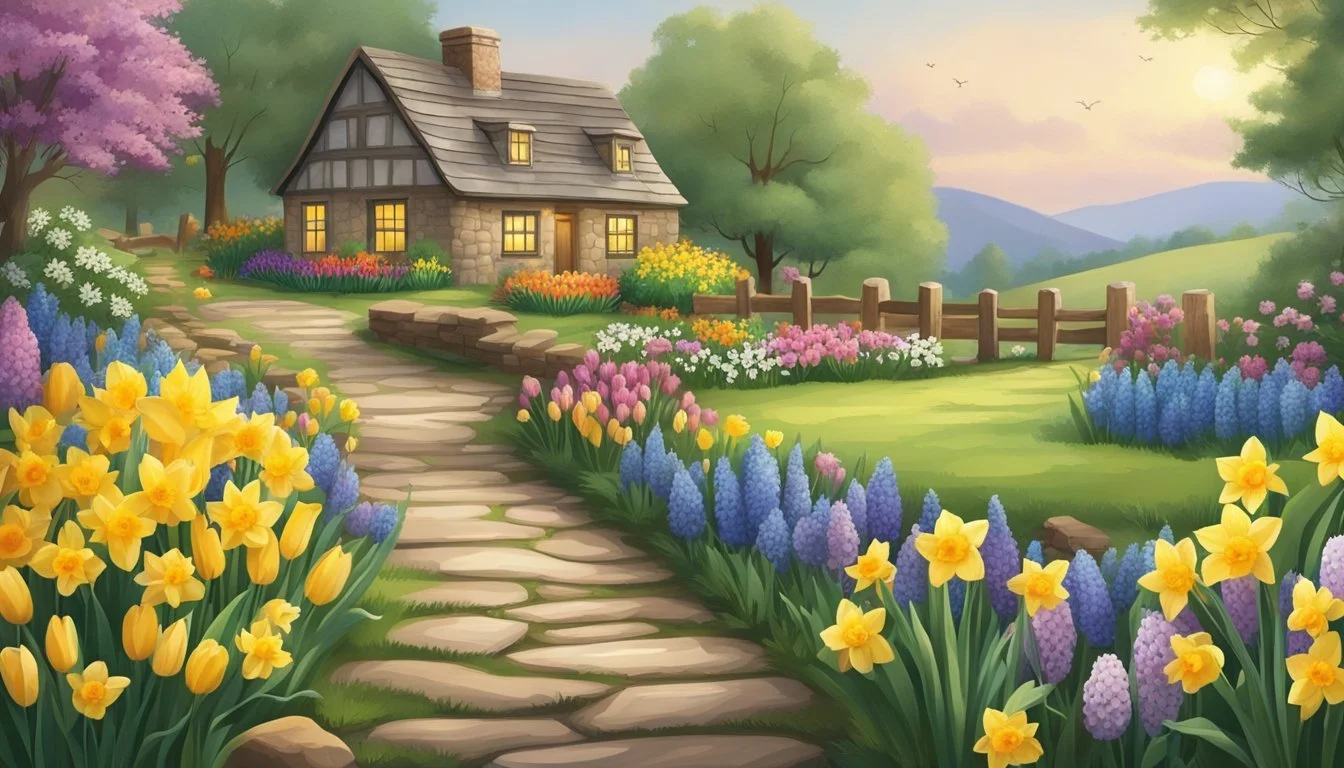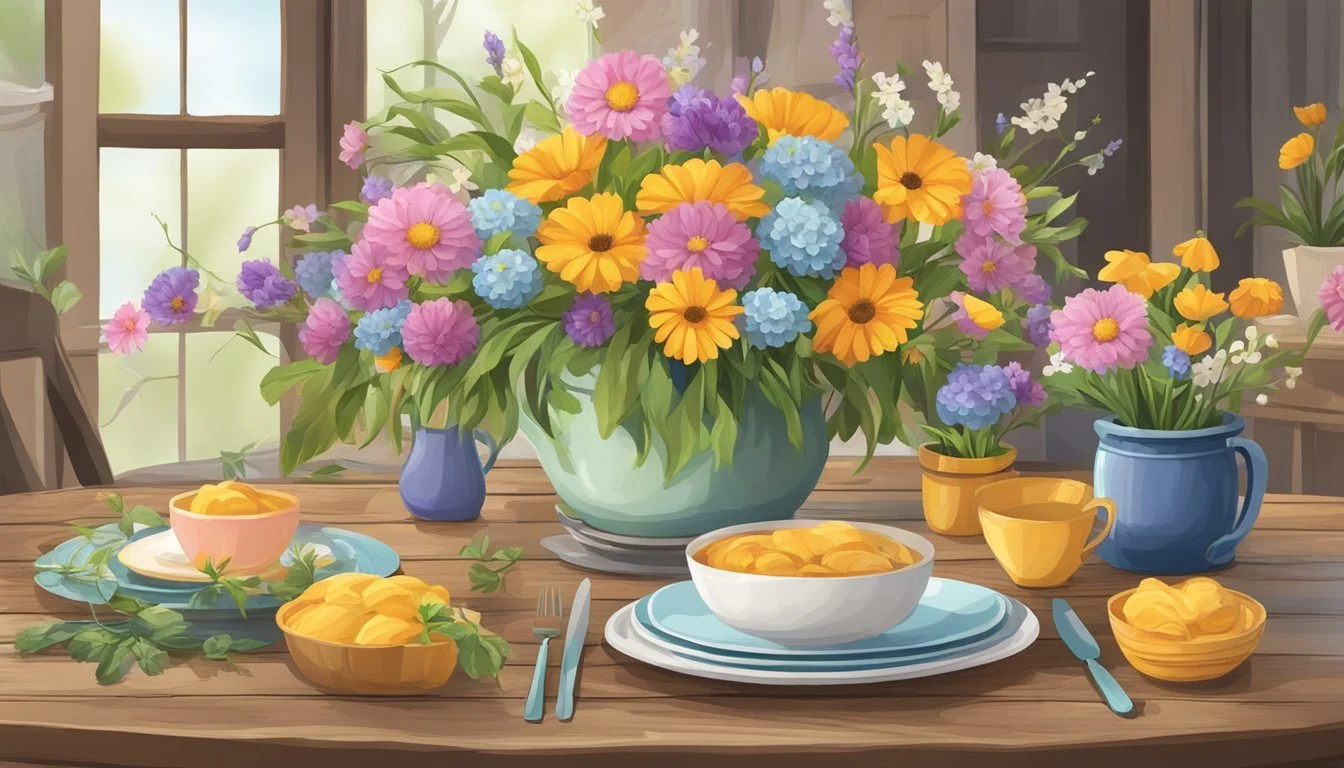Springtime in the Country
Easter Flower Guide - Choosing Blooms for Your Festive Bouquet
As winter's blanket thaws and nature begins to blossom, Easter, a season symbolizing rebirth and new life, ushers in a time to celebrate spring's vibrant palette. Flowers, integral to the festive tapestry, serve not only as emblems of hope and renewing cycles but also as centerpieces for Easter gatherings and expressions of joy. From the delicate fragrance of Lily of the Valley to the bold hues of Hyacinths, each bloom contributes to the narrative of spring's awakening.
In the countryside, this transformation is both a visual feast and a herald of seasonal festivities. Communities come together at events like "Springtime in the Country" in Hamburg, NY, where the fusion of fine craft, art, and natural beauty marks a 30-year tradition. Here, amid artisanal creations and the hum of expectant visitors, the presence of Easter flowers weaves a common thread of continuous growth and communal connection.
Selecting the right flowers for Easter is not only a matter of beauty but also of paying homage to the time-honored meanings behind these botanical wonders. Crocuses, for example, with their early bloom even through the last snow, stand for youth and happiness, accentuating the essence of Easter's joyous spirit. The careful curation of these botanical elements frames the essence of spring—a vibrant chapter of revival and the simple pleasure of Earth's natural rhythms.
Symbolism of Easter Flowers
The essence of Easter celebrations is often captured through the symbolic use of flowers. These blossoms are not just for beauty; they carry deep meanings reflecting themes of life, renewal, and hope.
Easter Lily: Purity and Hope
The Easter Lily, with its radiant white trumpet-shaped petals, stands tall as a symbol of purity and hope. This flower often graces churches and homes during the holiday to commemorate the resurrection and offer a message of renewed faith.
Daffodil: Rebirth and New Beginnings
Daffodils, vibrant in their yellow hues, signify rebirth and new beginnings. Their blooming coincides with Easter, and they are thought to bring with them the promise of renewal and the perpetual unfolding of life.
Tulip: Love and Passion
Tulips, with their variety of colors, carry different meanings, but overall, they embody love and passion. Red tulips are particularly associated with true love, while purple symbolizes royalty, and white conveys forgiveness, reflecting Easter's encompassing spirit of compassion and universal love.
Choosing Your Easter Flowers
When selecting Easter flowers, one must consider their color significance and seasonal availability. This mindful approach ensures a meaningful and timely Easter display.
Color Meanings and Selection
Color Flower Examples Significance White Easter lilies, White tulips Purity, innocence, and new beginnings Purple Hydrangeas, Purple tulips Royalty, dignity, and admiration Pink Pink hydrangeas, Pink tulips Love, happiness, and gentleness Blue Blue hydrangeas Serenity, stability, and trust Pastel hues Mixed tulips, Daffodils Softness, playfulness, and understated charm
Individuals often select flowers not only for their beauty but also for their color meanings. White flowers like Easter lilies and white tulips represent purity and new beginnings, which are deeply associated with the Easter season. Purple flowers such as hydrangeas and purple tulips are chosen for their regal hues, symbolizing admiration and dignity. For a touch of love and appreciation, pink flowers like pink tulips and hydrangeas are suitable, while blue hydrangeas introduce serenity to your space. Pastel colors, including soft yellows, pinks, and blues often found in tulips and daffodils, are perfect for capturing the playful and gentle essence of spring.
Blooming Seasons and Availability
Spring season heralds the blooming of various flowers suited for Easter displays. Individuals can select from a range of plants that are in their prime during this period.
Tulips: Available in early to late spring, tulips provide a burst of vibrant colors as well as softer pastel tones.
Daffodils: As some of the first flowers to herald the spring season, daffodils bring vibrant yellow and white to Easter gardens.
Easter Lilies: Although not naturally in bloom until later in spring, commercially grown Easter lilies are available during the Easter season.
Hydrangeas: Available in a spectrum of colors, hydrangeas can be found during the spring season, with their lush blooms adding vibrancy to any arrangement.
Flowers like tulips and daffodils are widely available during the spring season, making them easily accessible for Easter festivities. Their wide color range from vibrant yellows and reds to gentle pastel shades makes them highly sought after for Easter displays. Easter lilies, although not typically in natural bloom, can be procured from florists due to their strong association with the holiday. Hydrangeas, with their full, opulent flowers, come in a variety of colors and are also fitting choices for Easter celebrations.
Caring for Easter Blooms
Proper care extends the vase life of Easter blooms and ensures that their vibrant colors and delicate aromas can be enjoyed throughout the season. Specific hydration techniques and understanding the ideal sunlight and temperature requirements are critical for maintaining the health and beauty of these flowers.
Hydration and Vase Life
Hydration is crucial for Easter flowers, as it directly impacts their longevity and appearance. They should be placed in a vase filled with fresh water as soon as possible to prevent wilting. Here are key hydration tips:
Fresh Water: Change the water every 2 days to prevent bacteria growth.
Trim Stems: Cut the stems diagonally under running water to ensure optimal water uptake.
Temperature: Keep the water at room temperature to avoid shocking the blooms.
Sunlight and Temperature Requirements
Easter blooms thrive under certain sunlight and temperature conditions. Here’s what to consider:
Direct Sunlight: Avoid placing vases in direct sunlight as it can shorten the flower's life and fade their colors.
Consistent Temperature: Maintain a stable room temperature between 65-75°F (18-24°C) to help blooms last longer.
Avoid Drafts: Place vases away from drafts, heating or cooling vents, to prevent premature drying.
Decorative Ideas for the Season
As the countryside awakens in the spring, embracing seasonal decor can brighten any space. Incorporating vibrant flowers like roses, hydrangea, and ranunculus into centerpieces and arrangements brings cheer and style to Easter celebrations.
Creating a Seasonal Centerpiece
A centerpiece that captivates can be crafted using a combination of pastel-colored flowers and greenery. Hydrangeas and baby's breath, for instance, create a cloud-like base. For a touch of elegance, one might weave in sprigs of lily of the valley. To achieve a stunning visual impact, they should anchor the arrangement with a few strategically placed ranunculus blooms, known for their layered petals and array of pleasing colors.
Focus Flowers: Hydrangea, Baby's Breath, Lily of the Valley, Ranunculus
Colors: Pastel palette (soft pinks, blues, yellows)
Elements: Greenery for contrast, Easter-themed embellishments
Easter Table Settings and Arrangements
Table settings for Easter should reflect the freshness of the season. One can layer table linens in soft, pastel hues, setting the stage for a charming display. Roses, often a symbol of beauty and renewal, can be placed in small vases or grouped with other blooms like hydrangeas to form delightful bouquets. Adding some bright pops of color with seasonal flowers can enhance the festive atmosphere.
Table Linen Colors: Pastel blues, pinks, lavenders
Flower Selection: Roses, Hydrangeas
Placement: Center of the table, individual guest settings
Unique Easter Flowers and Their Meanings
Easter flowers are not only beautiful but also rich in symbolism. Each variety carries its own unique message, traditionally associated with the season’s themes of renewal and hope.
Hyacinth: Sincerity and Joy
The hyacinth is a flower known for its vibrant colors and intense fragrance. It symbolizes sincerity and joy, qualities that resonate with the spirit of Easter. The bloom of the hyacinth during spring underscores these sentiments, reminding one of rebirth and happiness.
Colors: Purple, pink, white
Associated with: Playfulness and cheerfulness
Iris: Faith and Wisdom
Irises are captivating flowers that come in various hues, each carrying a different meaning. Generally, the iris reflects faith and wisdom, embodying the deeper spiritual significance of the Easter season.
Colors: Blue, purple, white, yellow
Associated with: Royalty and purity
These unique Easter flowers, with their distinct meanings, contribute to the multi-faceted celebration of the season, bringing with them messages of hope, faith, and joy.
Incorporating Tradition and Modern Flair
Springtime ushers in a blend of enduring rituals and fresh trends in the celebration of Easter, often observed through the use of symbolic flowers. The incorporation of traditional blooms in religious ceremonies continues, while contemporary approaches add modern flair to Easter décor.
Flowers in Religious Celebrations
Easter flowers have deep roots in religious traditions. Churches and homes are adorned with intended symbolism: Lilies, known as Lent lilies in England, represent purity and renewal, heralding the resurrection. The Azalea, another traditional Easter flower, signifies temperance and passion, often used to decorate altars and reflect the solemnity of the season. Furthermore, each flower chosen reflects joy and celebration, integral to the Easter narrative.
Contemporary Easter Floral Trends
Modern Easter arrangements often feature a mix of traditional elements with contemporary styles. Bold, bright flowers such as Gerbera daisies and Moth Orchids have become popular choices for their vibrant colors and unique forms. They serve as a focal point for centerpieces and gifts that reflect the joyous mood of Easter. Designers now often incorporate non-traditional colors and textures, pairing conventional blooms like azaleas with unexpected elements to create striking visual displays.






